AMD has authorized the publication of reviews of the new Ryzen AI 300 Max mobile processors, codenamed Strix Halo. Since there are not many solutions based on these chips yet, most reviewers have assessed the performance of the Ryzen AI 300 Max in the 13-inch Asus ROG Flow Z13 gaming tablet.
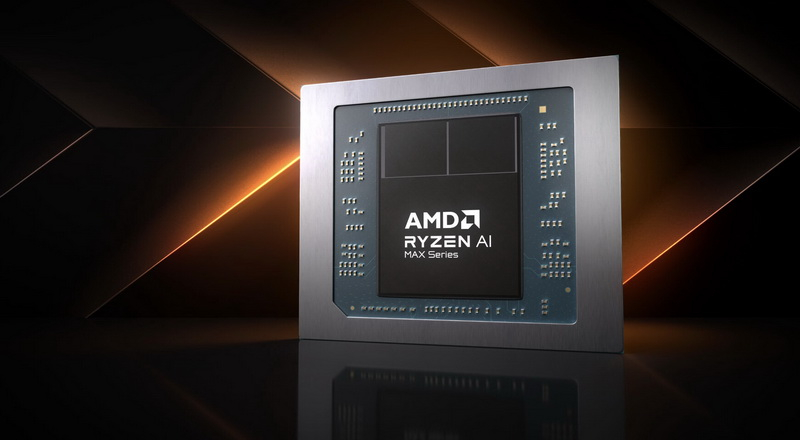
Image Source: AMD
The Ryzen AI 300 Max are large APUs with two chiplets with compute cores (CCD) and a huge input/output die (I/O Die). The latter houses powerful integrated graphics with up to 40 compute units (CUs) and an XDNA2 AI accelerator (NPU) with 50 TOPS (trillion operations per second) performance.
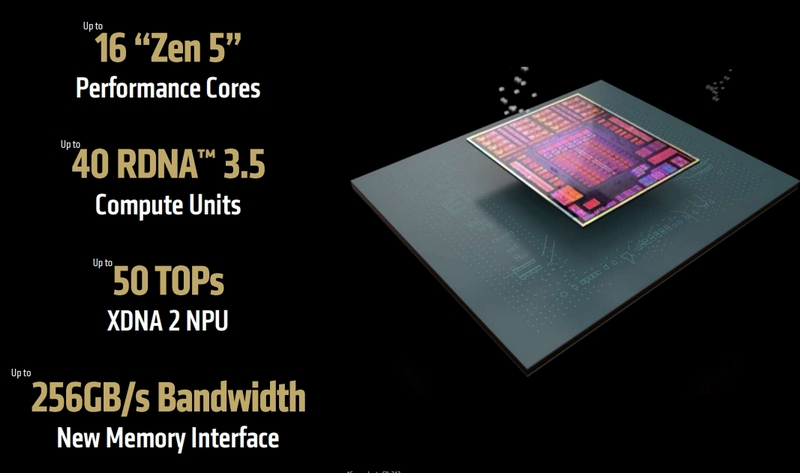
Unlike the Ryzen 9000HX (Fire Range) mobile processors, some models of which are equipped with additional 3D V-Cache cache, the Ryzen AI 300 Max chips do not receive additional cache. However, according to Tony Yu, head of Asus China, the CCD blocks of the Ryzen AI 300 Max processors have rows of TSV (through silicon vias), which technically opens the possibility of equipping these chips with a 3D V-Cache cache layer. Rumor has it that the X3D series is planned for the successor of the Ryzen AI 300 Max. However, the presence of TSV in the Ryzen AI 300 Max suggests that their silicon is already ready for such a cache configuration.
The Ryzen AI 300 Max series includes three processor models offering 8, 12, or 16 Zen 5 cores and support for 16 to 32 threads. The clock speed of these chips reaches 5.1 GHz. Ryzen AI 300 Max processors are not limited to the low TDP level typical for mobile chips. The power consumption level can be configured by the manufacturer in the range of 45 to 120 watts, which makes them suitable for both powerful laptops and compact but productive desktops.
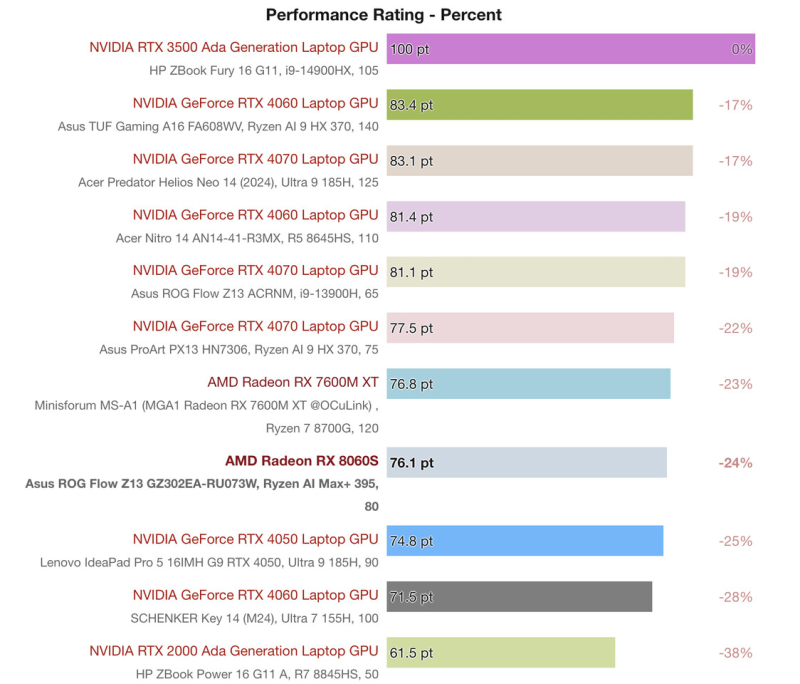
The most notable feature of the Ryzen AI 300 Max is its powerful integrated graphics. The flagship 16-core Ryzen AI Max+ 395, which is used in the Asus ROG Flow Z13 gaming tablet, is equipped with Radeon 8060S graphics based on 40 CUs with RDNA 3.5 architecture.
As the tests show, the iGPU provides performance at the level of a discrete mobile GeForce RTX 4070 video card and leaves the integrated Radeon 890M graphics of AMD Strix Point (Ryzen AI 300) and Arc 140V chips in Intel Lunar Lake (Core Ultra 200) far behind. At the same time, the Radeon 8060S turned out to be significantly slower than the integrated graphics of Apple M4 Max processors in some tests.
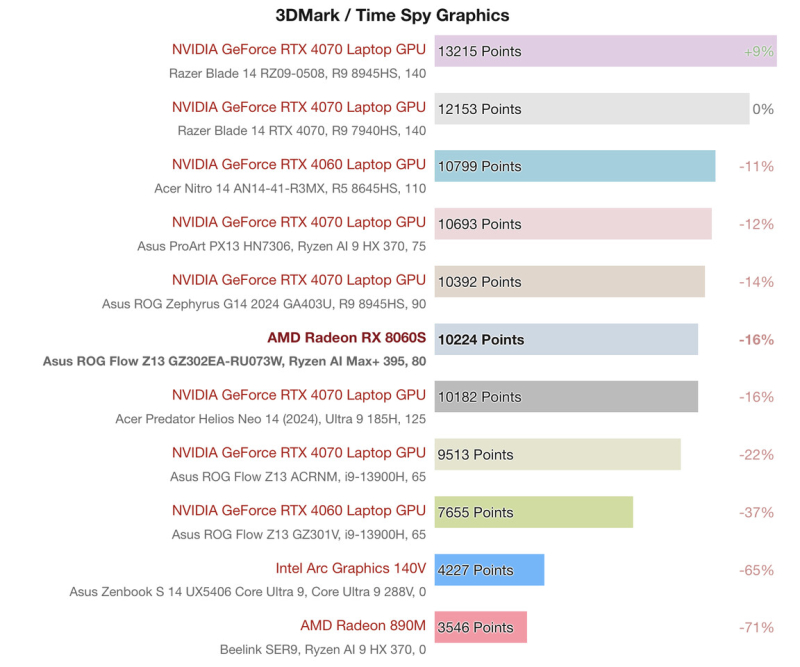
According to Notebookcheck, the 40-CU Radeon 8060S graphics card in the Asus ROG Flow Z13 tablet scored 10,200 points in the 3DMark Time Spy test. This puts the Radeon 8060S on par with the mobile GeForce RTX 4070 in 14-inch laptops like the ROG Zephyrus G14, which scored 10,300 points. Compared to the previous-generation Asus ROG Flow Z13, which offers an RTX 4070 graphics card with a TDP of 65 W, the Radeon 8060S has an advantage of about 5%.
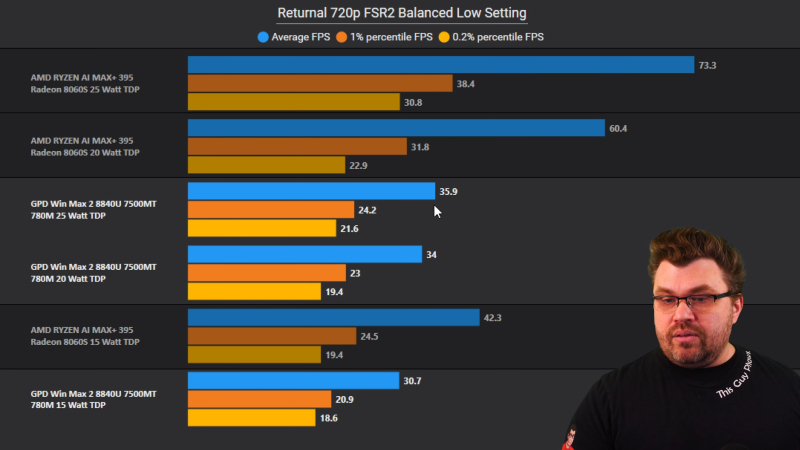
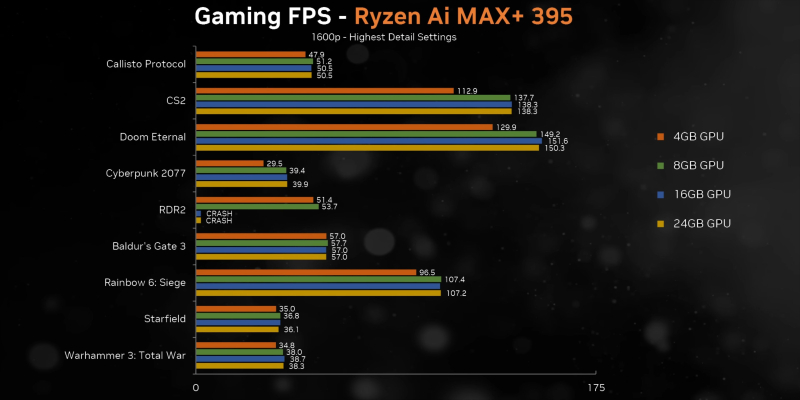
Laptops with RTX 4070, for which the manufacturer has allocated a significantly larger TDP reserve, GeForce graphics are faster than the newcomer from AMD. For example, Razer Blade 14 with RTX 4070 with a TDP of 140 W demonstrates a result in the same 3DMark Time Spy test above 13,000 points.
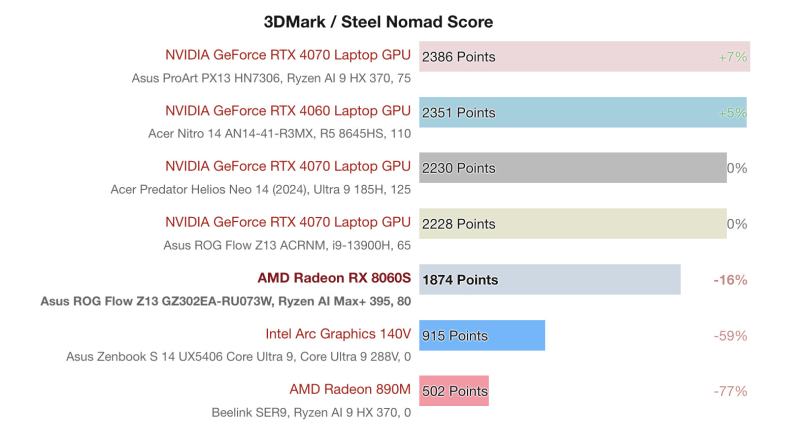
In the Steel Nomad test, the Radeon 8060S performs less impressively. It is still faster than other integrated graphics solutions from AMD and Intel, but it is inferior not only to laptops with an RTX 4070, but also to systems with an RTX 4060 with an increased TDP (110 W).
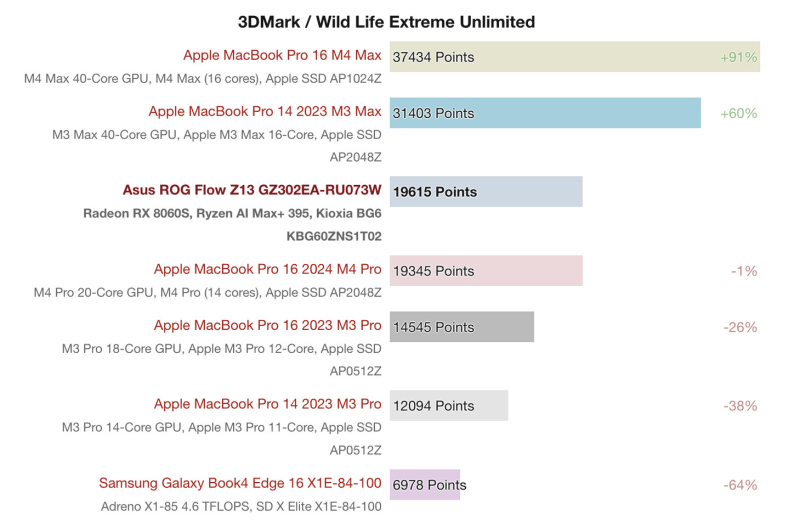
The Radeon 8060S holds its own against the Apple M4 Pro’s 20-core iGPU in 3DMark Wild Life, but falls well short of the Apple M4 Max’s 40-core iGPU and the Apple M3 Max’s 38-core iGPU. Both Apple chips outperform AMD by 64% and 94%, respectively.
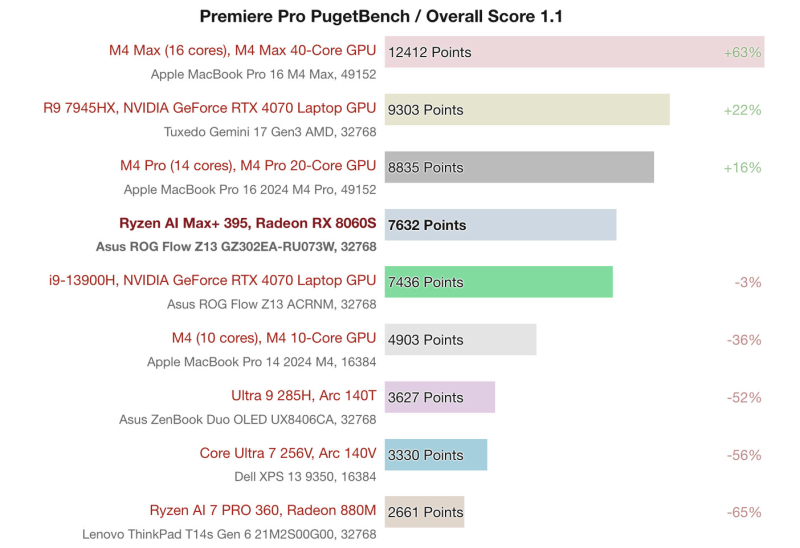
The Radeon 8060S’s gaming performance is impressive. While it’s inferior to the 65W RTX 4070, the Radeon iGPU is faster than the discrete RTX 4050 and low-power RTX 4060 variants. As Notebookcheck points out, the Radeon 8060S’s performance is on par with the Radeon RX 7600M XT’s 32-CU RDNA 3 architecture.